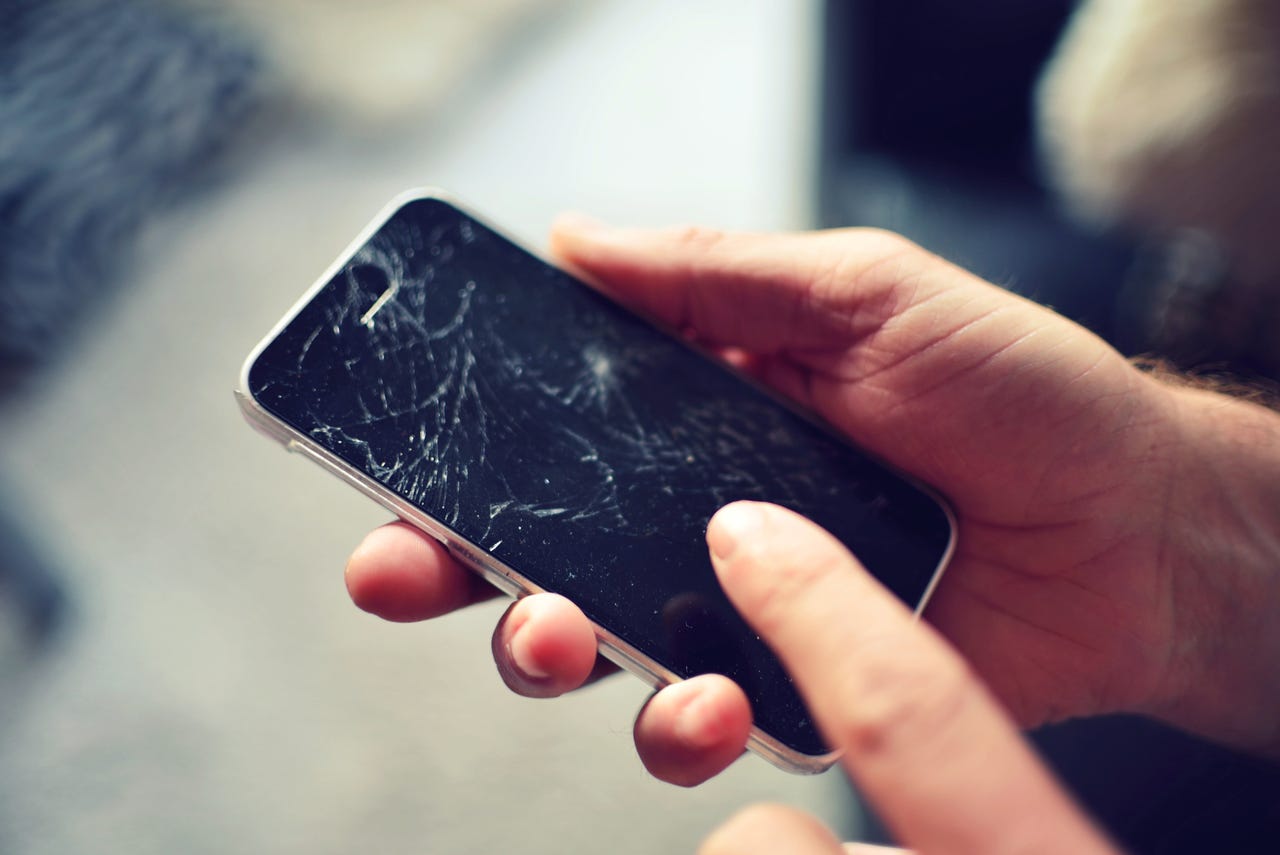There’s something you should know about before you get your damaged phone screen replaced

About two weeks ago I dropped my Pixel 7 Pro, shattering the screen. Now, I'm usually very careful with my phones and rarely drop them. This time, it was an instance of, “Oops, I totally forgot my phone was in my lap before I stood up after sitting on concrete steps.” And it didn't matter if there was a case or not, because the screen slammed into the edge of a step.
Crash. Bang. Boom.
Also: Google Pixel 7 vs. Pixel 7 Pro: How to buy the right one for you
The initial crack wasn't so bad but within minutes it became a spiderweb of destruction, leaving me with no choice but to either replace the phone or get it repaired. After calling around, the best price I could get was $299.00. That was a hard pill to swallow, knowing that I would be replacing the device with a Pixel 8 this fall. However, I also wasn't okay with replacing the device with the same iteration of Pixel and trashing the old one because there's already enough tech waste burdening the planet.
My choice was made. I'd replace the screen and, once I purchased the Pixel 8, I'd hand the 7 Pro down to a family member or trade it in when I purchased the 8. Fortunately, I had my old Pixel 6 Pro that could serve as a replacement until the 7 Pro was fixed.
Also: Pixel 7 and Pixel 7 Pro hands-on: The start of Google's walled garden
I did a factory reset on the 7 Pro and drove to the store that would handle the replacement and was told they didn't have a screen in stock and would have to have one transferred. That was a pretty stark reminder that Apple phones still rule the United States. Had that been just about any iPhone iteration, they would have had a screen in stock.
I told them to keep the phone and fix it when the screen arrived.
Signed. Sealed. Delivered.
It was now just a matter of waiting.
After a few days, I hadn't heard anything, so I gave them a call to find out if the phone was ready. I drove to the store and was about to pay for the repair when I noticed the pinhole camera (aka “Selfie” camera) was obstructed. The gentleman behind the counter took one look and said, “Oh, yeah, it sure is.” Of course, they agreed to redo the repair.
After another round of “a few days,” I once again had to make the call to find out if it was ready. I picked it up, paid for the repair, and took the phone home.
That's when the real issue appeared.
Also: Google Pixel 7 Pro vs Pixel 6 Pro: Which is the best flagship for you?
On first boot of the device, I noticed something had changed. My fingerprint scanner was no longer there. I went ahead and set the phone up, thinking an update would fix the problem. It did not. I opened Settings to see the Fingerprint Scanner option was no longer there.
First off, I was never told the fingerprint scanner would no longer work. Second, I was also not told they'd be using an after-market screen.
So, I took the phone back and showed them what was going on. That was when they confessed to using an after-market screen and the fingerprint scanner would be disabled in Android. I made it very clear that was not acceptable…especially given I wasn't warned beforehand.
Fortunately, the company agreed to replace the screen with an official Google screen, so the fingerprint scanner would work again. However, they would have to order the screen first, which could take a few days. Again, not a problem because I have the Pixel 6 to lean on. But for someone who didn't have the luxury of a spare, this could be a serious issue.
Also: How to use the Pixel 7 Pro's Macro Focus Mode for amazing photography
The lesson here, for anyone who ever has to take a phone in for a screen replacement, is twofold:
-
Make sure you are aware of any changes that might occur to your device because of the repair.
-
Make sure, if your phone has an on-screen fingerprint scanner, that the company doing the repair isn't using an after-market replacement screen.
Popular now
Clearly, the company should have warned me they would be using an after-market screen and that it would disable the fingerprint scanner. Had they told me that out of the gate, I would have informed them I wanted an official Google screen because I depend on biometrics to log into a number of applications. Also, anyone who still wears a mask in public would have trouble using face unlock, which is why the fingerprint scanner is an important method of unlocking a device.
Also: Google Pixel 7 and Pixel 7 Pro: Everything announced and the best deals
This sort of thing shouldn't happen. Any company that does such replacements should be bound to make the consumer fully aware of any changes that will result in the repair. Fortunately, the company that did the repair is only making me pay the difference between the after-market and official Google screen. Even so, that total comes up to $350.00 — which is just below half of what I paid for the phone in the first place (and probably about what I'll get for trade-in, should I go that route).
So, for anyone who has to take their phone in for repair, make sure you make it clear you do not want an after-market screen and, should a feature no longer work because of the repair, make the company aware of this fact and insist they make it right.

